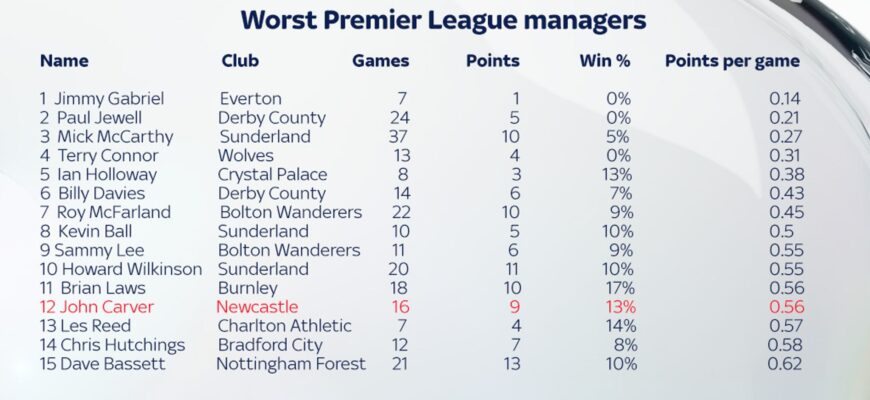The English Premier League is a spectacle of skill, passion, and relentless drama. But beneath the surface of roaring crowds and improbable comebacks lies a financial ecosystem where the stakes are astronomically high. While transfer fees and player wages often dominate headlines, there`s another colossal expenditure that silently accumulates in club balance sheets: the severance packages paid to dismissed managers. These “golden handshakes” are not merely polite farewells; they are often eye-watering sums that underscore the unique, and often brutal, economics of top-flight football.
The Anatomy of a Golden Handshake
Why do Premier League clubs pay such exorbitant sums to managers they no longer wish to employ? The answer lies in the highly competitive nature of the sport and the contracts designed to attract elite talent. Managers are often signed on multi-year deals, reflecting the club`s perceived long-term vision. However, football is a results business, and “long-term” can rapidly become “next week” if performance dips. When a manager is dismissed prematurely without a proven breach of contract (beyond sporting results), clubs are legally obligated to pay out the remainder of their contract, or a negotiated settlement, which frequently runs into tens of millions of euros.
This situation presents club owners with a perennial dilemma: persist with an underperforming coach and risk falling out of lucrative European qualification spots or even relegation, or cut ties decisively and incur a monumental financial hit. More often than not, the perceived cost of continued failure outweighs the immediate burden of a severance payment, leading to the kind of figures we frequently observe.
When Success Still Costs a Fortune: The Conte Conundrum
Perhaps one of the most striking examples of this financial paradox is Antonio Conte`s departure from Chelsea in 2018. Having led the club to a Premier League title in his debut 2016/17 season, his contract was extended. Yet, less than a year later, despite a subsequent FA Cup triumph, Conte was dismissed. The ensuing severance package amounted to nearly €30 million, making it arguably the most expensive managerial sacking in Premier League history. This case is a stark reminder that even championship-winning campaigns offer no absolute guarantee of longevity, though they certainly inflate the cost of an untimely departure.
“In football, success is often a temporary reprieve, not a permanent pardon. And sometimes, the farewell is more expensive than the celebration.”
The “Special One`s” Unique Financial Acumen
No discussion of managerial payouts would be complete without acknowledging José Mourinho, whose name appears twice on the list of top expenditures. His ability to command significant compensation upon exit is almost as legendary as his tactical prowess. When his first spell at Chelsea concluded in 2007, he departed with approximately €26.5 million. A decade later, his tenure at Manchester United, despite securing a League Cup and Europa League, concluded with another substantial payout estimated around €22.5 million. These figures are a testament not only to his value as a manager but also, arguably, to his unparalleled aptitude for crafting robust exit clauses in his contracts.
Legends and Legacies: The Arsène Wenger Departure
Arsène Wenger`s departure from Arsenal in 2018, after an astonishing 22-year tenure, offers a slightly different, but equally costly, perspective. While framed as a mutual parting of ways rather than a straightforward sacking, the financial commitment to “facilitate” such a transition was still considerable, reportedly around €20 million. This highlights the complex financial obligations even when a club legend concludes an era, demonstrating that long-term relationships, when they end, can still carry significant weight on the balance sheet.
The Broader Landscape and Club`s Gamble
Other notable examples, such as Brendan Rodgers` exit from Liverpool in 2015, which came with a payout of nearly €18 million, reinforce a systemic trend. Premier League clubs operate under immense pressure from fans, media, and owners to deliver immediate results. This short-term focus often leads to knee-jerk decisions, where a slump in form or a disappointing finish can trigger a managerial change, regardless of the financial implications.
The decision to sack a manager is, therefore, a high-stakes gamble. Club boards must weigh the cost of severance against the potential financial windfall of qualifying for the Champions League or avoiding relegation. In a league where billions are at stake, a few tens of millions for a new direction can sometimes seem like a calculated, albeit costly, investment.
Conclusion: The High Price of Ambition
The narrative of Premier League football is one of relentless ambition, where the pursuit of silverware and commercial success often dictates decisions with colossal financial implications. The “costliest goodbyes” serve as a potent reminder that in the world`s most watched and wealthiest football league, even failure, or merely a lack of immediate resounding success, comes with a hefty price tag. The manager`s hot seat remains perhaps the most expensive piece of furniture in the sporting world, its occupant perpetually aware that while victory brings glory, departure almost invariably brings a golden, albeit often bittersweet, parachute.








